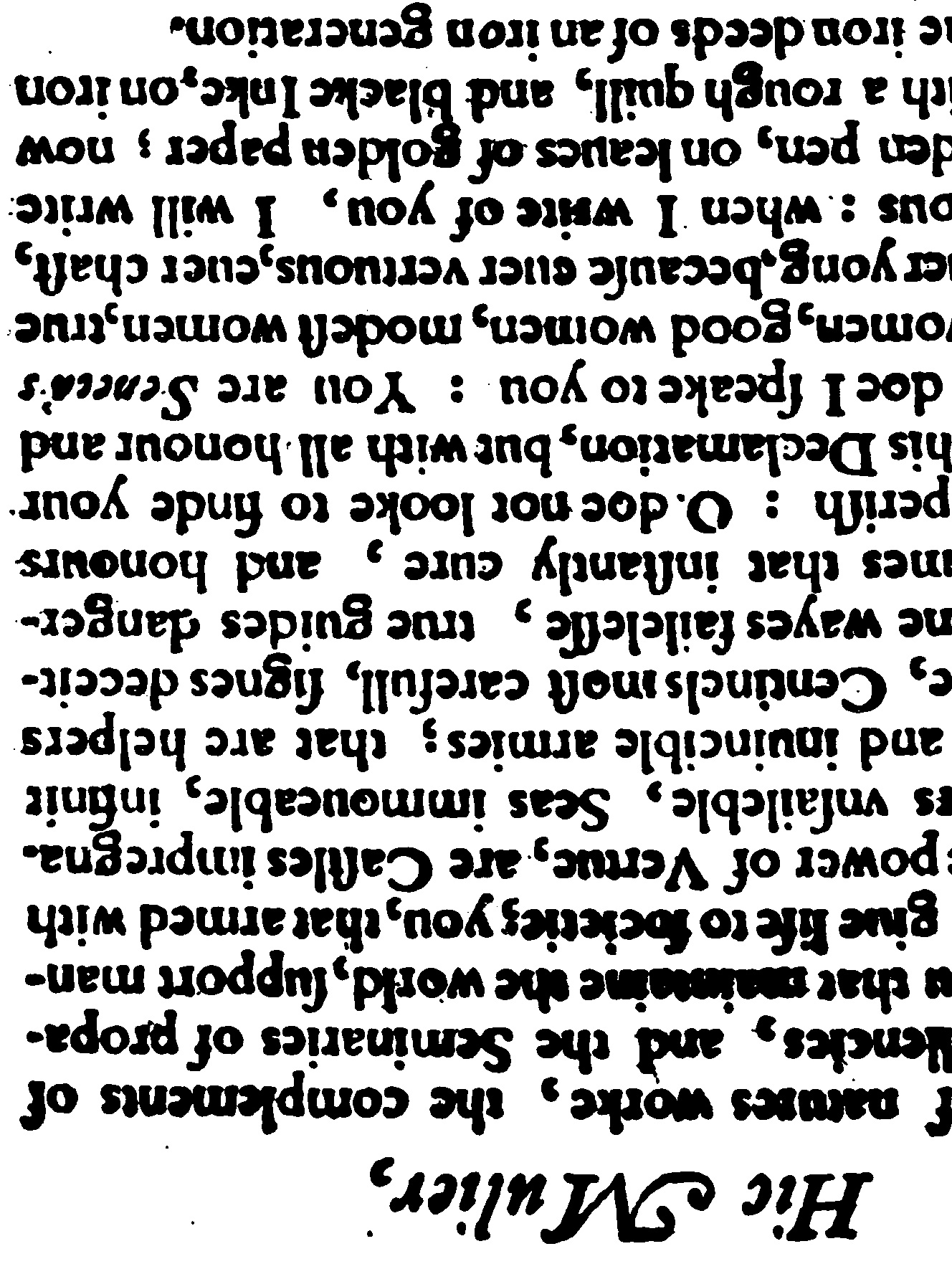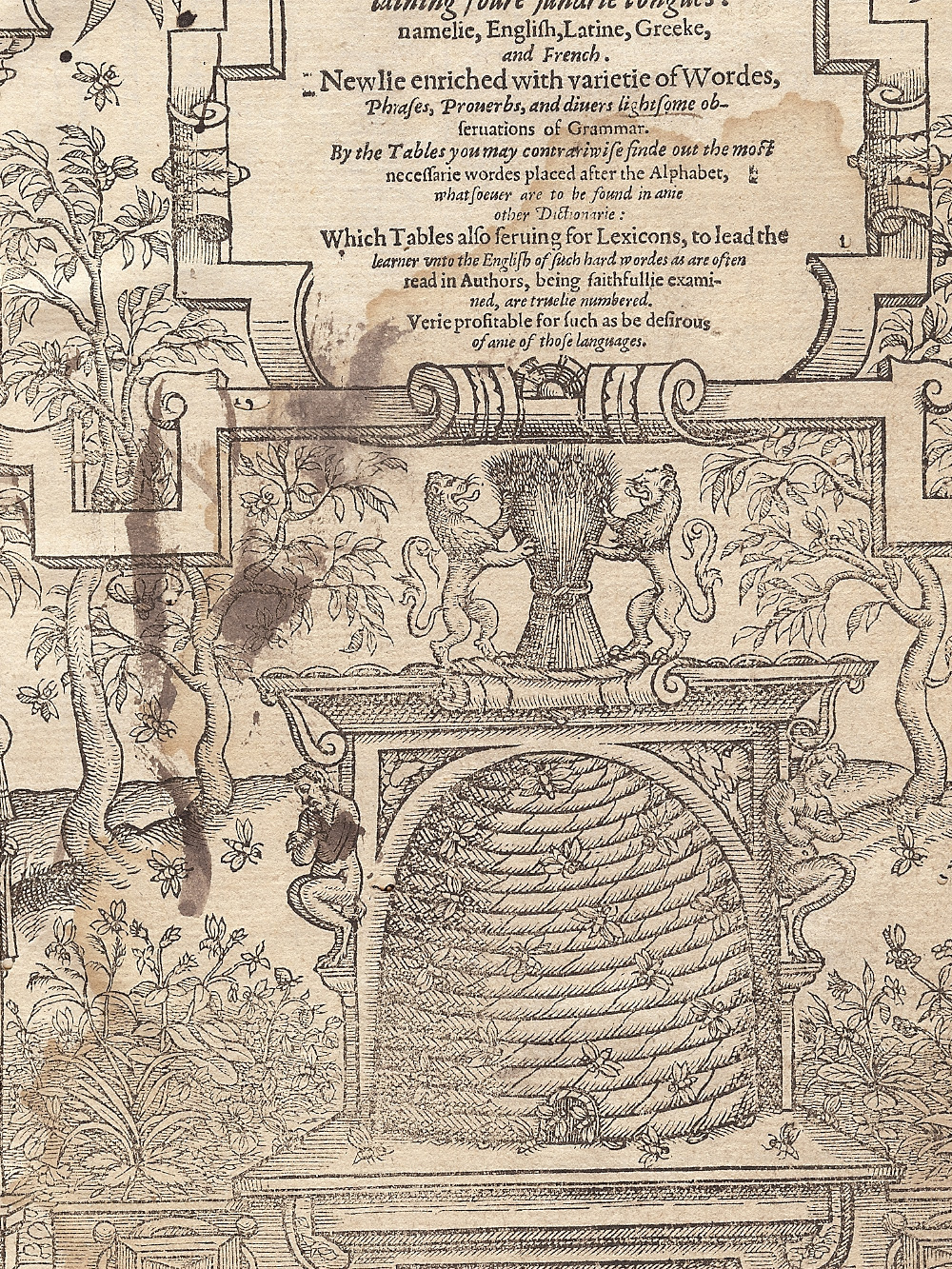The other evening, I had a provocative—if (because?) vaguely charged—exchange on Twitter with Whitney Trettien, a very sharp PhD candidate at Duke. You can find the central strand of my discussion with her on Storify, here. It began after Marissa Nicosia, who studies at Penn, solicited stories about researching with EEBO for a talk that she’s soon to give at the Rare Book School, stories illustrating both the opportunities and the challenges that the resource presents. In a post responding to the request, Whitney (if I may) expressed her frustration with the fact that EEBO (and the UMI series before it) very frequently obscures the material forms that early modern books take. And she is surely right that by taking the edition or issue rather than the individual volume as its unit of organization, EEBO demonstrates a disinterest in the kinds of juxtaposition and packaging that scholars have increasingly looked toward in an effort to understand reception and use. Material that sits outside the boundaries defined by an edition’s collation formula doesn’t usually make it in, and when it does, it often appears to be by accident. In fact, the focus on editions demands this kind of exclusion as a matter of principle; if EEBO is to be consistent with the way it has been designed, it can’t give us more. As a result, in addition to having to skip much of the material that makes books, well, books, EEBO has to leave out reappropriations of printed materials that in some cases constitute the creative labor of women and others traditionally excluded from the publication mechanisms of the book trade. When Whitney made a version of this point during our discussion, I suspect that she had in mind, at least in part, the Gospel Harmonies of Little Gidding, which she’s been doing exciting work on for her dissertation. These volumes contain what is almost exclusively printed material, but it would be quite a distortion to treat them in any straightforward way as copies of an edition or set of editions. Because of this, there’s no room for them in EEBO as it currently imagines itself.
The question about what EEBO should include and how it should organize itself can usefully be reframed as a question about what we should take “Books” in “Early English Books Online” to mean. As I’ve already indicated, what EEBO currently has in mind is the very same thing that the STC and Wing meant when they used it in their titles: distinct editions and issues published in print. An individual “book,” for EEBO, is a abstraction used to refer collectively to a set of actual copies made from, largely, the same setting of type. Yes, this is the stuff of Bibliography 101, but it’s worth spelling out in this context because it can be hard to tell what EEBO is in fact up to; its practices sometimes seem to border on incoherence. Still, when EEBO returns search results, it’s pointing more to ideas of books than particular, physical ones—even, awkwardly, as it turns around and displays images taken from specific copies. Like the concept of the edition itself, EEBO’s results emphasize a degree of sameness while washing over the differences that materiality almost necessarily entails. The paradox, as I just hinted at, is that EEBO organizes itself around abstractions at the same time that its facsimiles derive from objects quite particular and material. When using EEBO, as I wrote in reply to Marissa’s initial query,
@Nicosia_Marissa It seems simple to me: treat an EEBO copy as a copy of a copy of an ed., understanding that reproduction can intro. error.
— Aaron T. Pratt (@aarontpratt) May 8, 2014
Bibliographers and observant readers know that no truly representative copy of a given edition exists; even the most carefully planned and printed editions result in copies with formes in different states, and we should always expect different patterns of inking, shifting type, variations in paper stock, and, of course, different histories of use (and disuse). But as long as we understand that individual copies of an edition are necessarily individual and remain cognizant of the errors that multiple remediations might introduce (from original to microfilm and from microfilm to digital), EEBO remains an invaluable resource, one that has for years now made research possible that was impractical before it—at least for those researchers who have access to it. (Do remember that The Renaissance Society of America has secured access to EEBO for its members.) Since I’ve digressed somewhat into a discussion of best practices, I might as well repeat this here:
@Nicosia_Marissa That and this: use other bibliographical resources (STC, etc.) to confirm that you're looking at the ed. EEBO says you are.
— Aaron T. Pratt (@aarontpratt) May 8, 2014
OK, so EEBO as we know it thinks of “books” as editions and issues, and continues to digitize in an effort to make available at least one instantiation of each, both of which produce and continue to produce the blind spots described above. But what would it mean to turn EEBO on its head—to flip EEBO—and make its primary unit of organization the individual extant volume, the physical “book”? The sense of “book” as a copy you can in fact hold in your hands is arguably more intuitive than “book” as an abstraction, an edition or issue, and would allow the database to include all types and components of print that circulated in the period—the Little Gidding volumes; images of books’ bindings, pastedowns, and endpapers; complete composite volumes (sammelbände); etc. It would also avoid the problem of asking individual copies to masquerade as something they can never be, while in no way prohibiting searches by reference to STC, Wing, and ESTC numbers. EEBO currently subordinates individual copies under a larger category, but it would be relatively straightforward, both conceptually and practically, to include any possible classifications within copy-specific entries/listings. That is, such an EEBO could easily continue to facilitate the kind of searches we have come to expect—and very frequently want—from it. And if EEBO were to emphasize the particularity of its digitizations by branding itself as a database of volumes and not editions, it could retain this old functionality while simultaneously discouraging the temptation to think of a digitized copy as an ideal representative of its edition. The quality and reliability of the digitizations themselves would remain an issue until they’re replaced, but they would fit without a problem into the new database schema that the flip would require. It may even prove possible to piece together some sammelbände from the images already available.
Obviously, all of this is just a preliminary proposal, and does not work through the serious challenges that conversion from the existing system would pose. That said, though, I think this is probably the best way forward for EEBO—or its replacement—and would in fact make the database more consistent with many other repositories of digitized books now available.
One final note: while we were chatting, Whitney suggested the possibility of an object rather than a relational database, an idea that I entertained while thinking this through, but it turns out that the move I describe in this brief post wouldn’t necessitate a complex structure at all: a traditional SQL database would do the job just fine, and would actually be quite extendable and scaleable. Each volume could have a general entry in a table that contains all of the fields relevant for describing it, and there could be another table containing specific entries for each constituent text (even if the book only includes one) that links back to the volume. This latter table could contain any relevant catalog citations, including STC, Wing, and ESTC numbers. Of course, I’m simplifying a bit, but an actual implementation of even a fairly large database like EEBO wouldn’t need to be much more complex.
* The featured image comes from an EEBO copy of Hic mulier: or, The man-woman (London: John Trundle, 1620. STC 13375.5), sig. A3v. It’s the copy taken from UMI 839:14. Hopefully my use here will be considered fair. As you may know, Hic mulier is itself a book about “flipping,” though it’s far less keen on the idea than I am.



